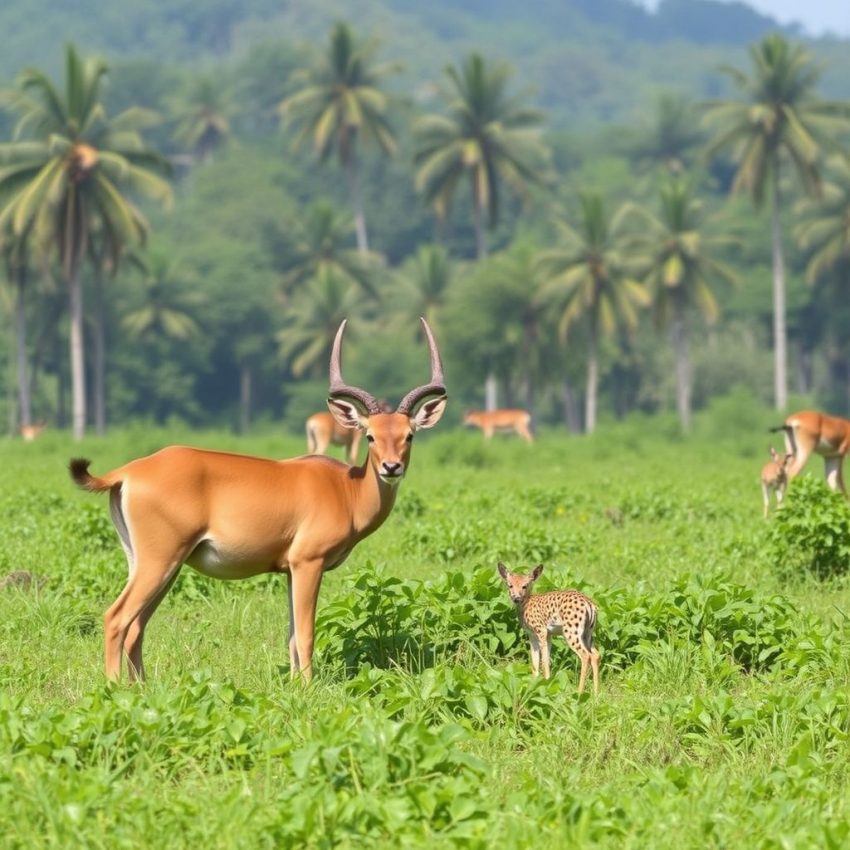Monkey Business: Sri Lanka's Wildlife Census Sparks Debate Over Crop Damage
Sri Lanka, a biodiversity hotspot, is currently undertaking a nationwide census of its wildlife, including monkeys, giant squirrels, and peacocks. While this initiative is crucial for conservation efforts, it has also reignited a long-standing debate between wildlife protection and the livelihoods of farmers who face significant crop damage from these animals.
The census, a first-of-its-kind comprehensive effort, aims to provide accurate population data for these species, enabling better wildlife management strategies. Understanding population dynamics is vital for conservation, particularly for species like the endemic giant squirrel, facing habitat loss and other threats. However, for many farmers, these animals are not a symbol of biodiversity but a daily struggle.
Across the island, farmers complain of monkeys raiding their fruit trees, giant squirrels nibbling on coconuts, and peacocks devouring newly sown seeds. For subsistence farmers, these losses can be devastating, impacting their food security and income. "It's a constant battle," says one farmer in the central highlands. "We invest time, money, and effort, only to see our crops destroyed by these animals. What are we supposed to do?"
The government has implemented various mitigation strategies, including electric fences and noise deterrents, but their effectiveness remains debated. Many farmers argue that these measures are expensive and not always practical. Furthermore, traditional methods of scaring animals away, like using firecrackers, are becoming less effective as the animals grow accustomed to the noise.
The current census offers an opportunity to address this complex issue more effectively. By accurately mapping the distribution and population density of these animals, authorities can better target mitigation efforts and potentially explore alternative solutions. This could include:
- Promoting crop insurance schemes: Providing financial safety nets for farmers affected by wildlife damage can alleviate their burden and encourage coexistence.
- Exploring alternative livelihoods: Supporting farmers in diversifying their income sources, such as through eco-tourism or sustainable agriculture practices, can reduce their reliance on vulnerable crops.
- Improving habitat management: Protecting and restoring natural habitats for these animals can help reduce their reliance on agricultural land for food.
- Community-based conservation programs: Engaging local communities in wildlife management can foster a sense of ownership and promote sustainable solutions.
The challenge lies in finding a balance between protecting Sri Lanka's rich biodiversity and ensuring the livelihoods of its farmers. The wildlife census is a crucial step towards achieving this balance. It provides the data needed to develop informed policies and implement effective strategies that benefit both wildlife and people. The conversation, however, must continue, ensuring that the voices of those most affected – the farmers – are heard and considered in the quest for sustainable coexistence. Only then can Sri Lanka truly thrive, with both its people and its wildlife flourishing together.
Don’t miss out on this exclusive deal, specially curated for our readers! Amazon Fire TV 32″ 2-Series Review: Affordable Smart TV Packed with Value
This page includes affiliate links. If you make a qualifying purchase through these links, I may earn a commission at no extra cost to you. For more details, please refer to the disclaimer page. disclaimer page.

